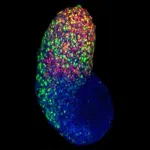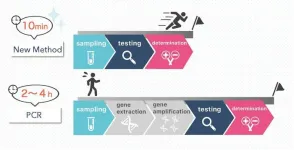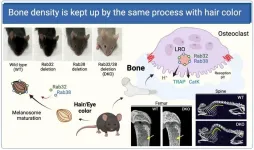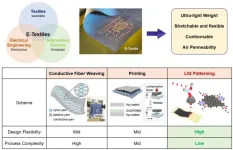(Press-News.org) An international team of researchers, led by IMDEA Networks and Northeastern University in collaboration with NYU Tandon School of Engineering, Universidad Carlos III de Madrid, IMDEA Software, University of Calgary, and the International Computer Science Institute, has unveiled groundbreaking findings on the security and privacy challenges posed by the ever-growing prevalence of opaque and technically complex Internet of Things (IoT) devices in smart homes.
Smart Homes: Trusted and Secure Environments?
Smart homes are becoming increasingly interconnected, comprising an array of consumer-oriented IoT devices ranging from smartphones and smart TVs to virtual assistants and CCTV cameras. These devices have cameras, microphones, and other ways of sensing what is happening in our most private spaces—our homes. An important question is, can we trust that these devices in our homes are safely handling and protecting the sensitive data they have access to?
“When we think of what happens between the walls of our homes, we think of it as a trusted, private place. In reality, we find that smart devices in our homes are piercing that veil of trust and privacy—in ways that allow nearly any company to learn what devices are in your home, to know when you are home, and learn where your home is. These behaviours are generally not disclosed to consumers, and there is a need for better protections in the home,” said David Choffnes, Associate Professor of Computer Science and Executive Director of the Cybersecurity and Privacy Institute at Northeastern University.
The research team’s extensive study, titled “In the Room Where It Happens: Characterizing Local Communication and Threats in Smart Homes,” was presented this week at the ACM Internet Measurement Conference (ACM IMC’23) in Montreal (Canada). The paper delves for the first time into the intricacies of local network interactions between 93 IoT devices and mobile apps, revealing a plethora of previously undisclosed security and privacy concerns with actual real-world implications.
While most users typically view local networks as a trusted and safe environment, the study’s findings illuminate new threats associated with the inadvertent exposure of sensitive data by IoT devices within local networks using standard protocols such as UPnP or mDNS. These threats include the exposure of unique device names, UUIDs, and even household geolocation data, all of which can be harvested by companies involved in surveillance capitalism without user awareness.
According to Vijay Prakash, PhD student from NYU Tandon who co-authored the paper, “analysing the data collected by IoT Inspector, we found evidence of IoT devices inadvertently exposing at least one PII (Personally Identifiable Information), like unique hardware address (MAC), UUID, or unique device names, in thousands of real world smart homes. Any single PII is useful for identifying a household, but combining all three of them together makes a house very unique and easily identifiable. For comparison, if a person is fingerprinted using the simplest browser fingerprinting technique, they are as unique as one in 1.500 people. If a smart home with all three types of identifiers is fingerprinted, it is as unique as one in 1.12 million smart homes.”
These local network protocols can be employed as side-channels to access data that is supposedly protected by several mobile app permissions such as household locations. “A side channel is a sneaky way of indirectly accessing sensitive data. For example, Android app developers are supposed to request and obtain users’ consent to access data like geolocation. However, we have shown that certain spyware apps and advertising companies do abuse local network protocols to silently access such sensitive information without any user awareness. All they have to do is kindly asking for it to other IoT devices deployed in the local network using standard protocols like UPnP.”, said Narseo Vallina-Rodriguez, Associate Research Professor of IMDEA Networks and co-founder of AppCensus.
“Our study shows that the local network protocols used by IoT devices are not sufficiently protected and expose sensitive information about the home and the use we make of the devices. This information is being collected in an opaque way and makes it easier to create profiles of our habits or socioeconomic level,” adds Juan Tapiador, professor at UC3M.
The Wider Implications
The impact of this research extends far beyond academia. The findings underscore the imperative for manufacturers, software developers, IoT and mobile platform operators, and policymakers to take action to enhance the privacy and security guarantees of smart home devices and households. The research team responsibly disclosed these issues to vulnerable IoT device vendors and to Google’s Android Security Team, already triggering security improvements in some of these products.
END
New research reveals alarming privacy and security threats in Smart Homes
A group of researchers from several international universities and research centres analyze the local network interactions of IoT devices and mobile apps, and demonstrate that a variety of security and privacy threats exist
2023-10-26
ELSE PRESS RELEASES FROM THIS DATE:
Machine can quickly produce needed cells for cancer treatment
2023-10-26
PULLMAN, Wash. -- A new tool to rapidly grow cancer-killing white blood cells could advance the availability of immunotherapy, a promising therapy which harnesses the power of the body’s immune response to target cancer cells.
Washington State University researchers have developed a minifridge-sized bioreactor that is able to manufacture the cells, called T cells, at 95% of the maximum growth rate – about 30% faster than current technologies. The researchers report on their work in the journal Biotechnology Progress. They developed it using T cells from cattle, developed by co-author Bill Davis of WSU’s ...
ERC synergy grant: Multidisciplinary research bridges physics and biology at ISTA and in France
2023-10-26
The Institute of Science and Technology Austria (ISTA) receives its second generous ERC Synergy Grant. ISTA Professor Gašper Tkačik is one of three awarded researchers to join forces on unraveling the secrets of gene regulation during mammalian development.
Three research groups from Austria and France team up to crack open the black box of early mammalian development. Now endowed with a prestigious Synergy Grant from the European Research Council (ERC), Gašper Tkačik (ISTA), Thomas Gregor (Institut Pasteur), ...
A new era for accurate, rapid COVID-19 testing
2023-10-26
Osaka, Japan – A rapid, accurate way of testing for COVID-19 infection would be a big step in overcoming the virus’ hold over our society. Now, in an article published in Lab on a Chip, Japanese researchers have developed a promising solution: a novel platform that couples nanopore technology with artificial intelligence.
What is a nanopore? A nanopore is a miniscule hole in a thin substrate, often a silicon wafer. A nanopore might range from several nanometers to several hundred nanometers in diameter — a scale small enough to work with SARS-CoV-2, the virus that causes ...
75% of exclusive hardwood may be illegally harvested
2023-10-26
The tropical wood type ipê is popular for building exclusive wooden decks, and in North America and Europe, the demand for the material has increased sharply. Now, a study from Chalmers University of Technology, Sweden, shows that more than three-quarters of all ipê from the top producing region in Brazil could have been harvested illegally. "The study reveals where in the chain the greatest risks lie. It can be a tool to counteract illegal logging," says Caroline S.S. Franca, PhD student at Chalmers.
Ipê is one of the world's hardest woods. It is therefore particularly suitable for building ...
Farmed wolffish could be on your plate in the future
2023-10-26
In the future, farmed wolffish could start appearing on fish counters. However, a new thesis from the University of Gothenburg shows that this fish, with its delicate, firm flesh, needs somewhat different farming conditions compared to salmon.
The salmon farms of today have created a steady supply of fish in our supermarkets. The nutritional content of salmon, its rapid growth and low cost, have made it a popular fish in many households. But only farming one species can create vulnerabilities in terms of food security. Today Sweden ...
MSU’s ‘Robin Hood’ approach for tracking biodiversity
2023-10-26
MSU has a satellite uplink/LTN TV studio and Comrex line for radio interviews upon request.
THIS STORY IS UNDER EMBARGO UNTIL OCT. 26 AT 12:01 A.M. EDT/05:01 A.M. U.K. TIME.
Images
Highlights:
Researchers at Michigan State University have developed a framework that can help scientists understand trends in biodiversity by using data from well-characterized species to provide insights on data-deficient species.
The framework is published in the Journal of Animal Ecology, which provides a how-to guide for researchers and practitioners to implement.
Roughly one in seven species are classified ...
Bone density is kept up by the same process with hair color
2023-10-26
Osaka, Japan – Bone is maintained via delicate balance between formation and resorption, and its imbalance leads to bone related diseases like osteoporosis rheumatism and periodontitis. In studies published in scientific journals J Biol Chem and Cell Struct Funct, researchers led by Osaka University revealed proteins named Rab32 and Rab38 play pivotal roles in bone resorption in osteoclast, cell specialized in the process. These proteins are also crucial for pigmentation of hair and skins.
Bone ...
Multimodal graphene-based e-textiles for the realization of customized e-textiles have been developed for the first time in the world
2023-10-26
Multimodal* graphene-based electronic textiles (e-textiles) for the realization of customized e-textiles have been developed for the first time in the world.
* Multimodal means the process by which information is exchanged through various sensory interfaces such as visual sensation and auditory sensation.
The joint research team led by Principal Researcher Soongeun Kwon of the Department of Nano Manufacturing Technology of the Korea Institute of Machinery and Materials (President Sang-jin Park, hereinafter referred to as KIMM), an institute under the jurisdiction of the Ministry of Science and ICT, and Professor Young-Jin Kim of the Department of Mechanical Engineering ...
Treating amphetamine use disorder with stimulants: an encouraging new approach
2023-10-26
A new study has found that it may be possible to use stimulants to treat stimulant use disorder. People with amphetamine-type stimulant use disorder who are treated with prescription psychostimulants such as methylphenidate and dextroamphetamine (commonly used to treat attention deficit hyperactivity disorder (ADHD)) may lower both their craving and stimulant use, especially if such treatments are administered at high doses. This study was led by Dr. Jutras-Aswad, a researcher at the CHUM Research Centre and a professor of psychiatry and addictology at Université de ...
Does guideline-based treatment prevent racial disparities in cardiovascular outcomes?
2023-10-26
Philadelphia, October 26, 2023 – Cardiovascular disease remains the leading cause of death for women within most racial and ethnic groups in the United States. A new study in the Canadian Journal of Cardiology, published by Elsevier, characterizes the risk profile for black and nonblack women with obstructive coronary artery disease (CAD) enrolled in the Women’s Ischemia Syndrome Evaluation (WISE) cohort study. It concludes that racial and ethnic disparities in long-term cardiovascular outcomes were not observed among women ...
LAST 30 PRESS RELEASES:
Singapore scientists discover lung cancer's "bodyguard system" - and how to disarm it
Bacteria use wrapping flagella to tunnel through microscopic passages
New critique prompts correction of high-profile Yellowstone aspen study, highlighting challenges in measuring ecosystem response to wolf reintroduction
Stroke survivors miss critical treatment, face greater disability due to systemic transfer delays
Delayed stroke care linked to increased disability risk
Long term use of anti-acid drugs may not increase stomach cancer risk
Non-monetary 'honor-based' incentives linked to increased blood donations
Natural ovulation as effective as hormones before IVF embryo transfer
Major clinical trial provides definitive evidence of impacts of steroid treatment on severe brain infection
Low vitamin D levels shown to raise risk of hospitalization with potentially fatal respiratory tract infections by 33%
Diagnoses of major conditions failing to recover since the pandemic
Scientists solve 66 million-year-old mystery of how Earth’s greenhouse age ended
Red light therapy shows promise for protecting football players’ brains
Trees — not grass and other greenery — associated with lower heart disease risk in cities
Chemical Insights scientist receives Achievement Award from the Society of Toxicology
Breakthrough organic crystalline material repairs itself in extreme cold temperatures, unlocking new possibilities for space and deep-sea technologies
Scientists discover novel immune ‘traffic controller’ hijacked by virus
When tropical oceans were oxygen oases
Positive interactions dominate among marine microbes, six-year study reveals
Safeguarding the Winter Olympics-Paralympics against climate change
Most would recommend RSV immunizations for older and pregnant people
Donated blood has a shelf life. A new test tracks how it's aging
Stroke during pregnancy, postpartum associated with more illness, job status later
American Meteorological Society announces new executive director
People with “binge-watching addiction” are more likely to be lonely
Wild potato follows a path to domestication in the American Southwest
General climate advocacy ad campaign received more public engagement compared to more-tailored ad campaign promoting sustainable fashion
Medical LLMs may show real-world potential in identifying individuals with major depressive disorder using WhatsApp voice note recordings
Early translational study supports the role of high-dose inhaled nitric oxide as a potential antimicrobial therapy
AI can predict preemies’ path, Stanford Medicine-led study shows
[Press-News.org] New research reveals alarming privacy and security threats in Smart HomesA group of researchers from several international universities and research centres analyze the local network interactions of IoT devices and mobile apps, and demonstrate that a variety of security and privacy threats exist






